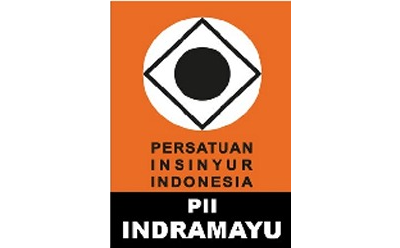PERANCANGAN 3D PRINTING CARTESIAN BERBASIS FUSED DEPOSITION MODELLING DENGAN UKURAN 200 X 200 X 200 mm
Abstract
The technology of adding manufacturing or 3D printing is one of the main issues in the concept of technology 4.0. The construction design of the 3D printing machine and the deflection of its construction significantly affect the accuracy of the dimension and shape the printed product. The study aims to obtain a construction design of a cartesian type 3 D printing machine based on fused deformation modelling, and to verify the maximum value of the deflection of the machine axis. The study method used VDI222, calculation analysis, and Finite Element Analysis (FEA) simulation using CAE Solidworks software to verify the strength and deflection of the machine design construction. The study results show the construction design of 3D printing machine has been obtained according to the requirement. The verified maximum deflection value is 0.036 mm, hence the maximum error in the dimensions and shape of the printed product for each layer will still be within the standard tolerance. In addition, its maximum deflection value is verified within the radial clearance value of each determined machine axis bearing.
Full Text:
PDFReferences
Al-Maliki, J. Q., 2015. The processes and Technologies of 3D Printing. International Journal of Advances in Computer Science and Technology. 4(10), 161-165.
Alsoufi, M. S., & Elsayed, A. E. 2017. Warping deformation of desktop 3D printed parts manufactured by open source fused deposition modeling (FDM) system. International Journal of Mechanical and Mechatronics Engineering, 17(4), 7–16.
Gibson, dkk., 2015. Additive Manufacturing Technologies: 3D Printing, Rapid Prototyping, and Direct digital Manufacturing (2nd ed). New York: Springer.
Ismianti, & Herianto. 2020. Adoption of 3D Printing in Indonesia and Prediction of Its Application in 2025. IOP Conference Series: Materials Science and Engineering, 722(1).
Kusuma, I. E., Dewi, D. S., & Gunarta, I. K. 2016. Penerapan Product Service System ( PSS ) Pada Pengembangan Model Bisnis Printer Tiga Dimensi (3D). Prosiding Seminar Nasional Manajemen Teknologi XXIV, 2014, 1–8.
More, M. P. 2013. 3D Printing Making the digital Real. International Journal of Engineering science & Research Technology, ISSN 2277-9655, 1822-1925.
Mwema, F. M., Akinlabi, E. T., & Fatoba, O. S. (2019). Visual assessment of 3D printed elements: A practical quality assessment for home-made FDM products. Materials Today: Proceedings, 26(xxxx), 1520–1525.
Rayna, T., & Striukova, L. (2016). From rapid prototyping to home fabrication: How 3D printing is changing business model innovation. Technological Forecasting and Social Change, 102, 214–224.
Redwood, B., Schoffer, F., & Garret, B. 2017. The 3D Printing Handbook: Technologies, design and applications. Amsterdam: 3D Hubs.
Wittel, H., Jannasch, D., Voßiek, J., & Spura, C. (2017). Roloff / Matek Maschinenelemente. In Roloff / Matek Maschinenelemente (23 ed.). Springer Vieweg. https://doi.org/10.1007/978-3-8348-9406-9
DOI: https://doi.org/10.31884/jtt.v9i1.399
Refbacks
- There are currently no refbacks.
Copyright (c) 2023 JTT (Jurnal Teknologi Terapan)

This work is licensed under a Creative Commons Attribution-NonCommercial-NoDerivatives 4.0 International License.
 Creative Common Attribution-ShareAlike 4.0 International (CC BY-SA 4.0)
Creative Common Attribution-ShareAlike 4.0 International (CC BY-SA 4.0)













